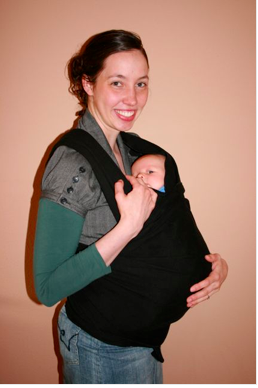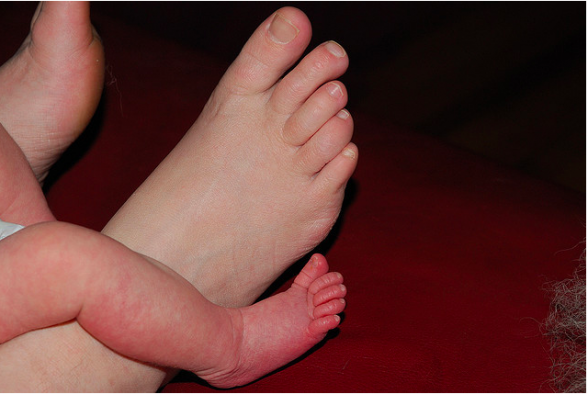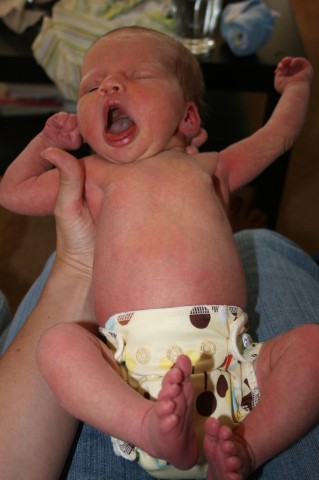
This is part two of a short series on Infant Routines. To read part 1, visit here.
As I mentioned in part 1, my desire with this series is simply to share how God has led us to most peacefully establish an infant routine at our home while keeping a balance in our priorities. We function on a flexible routine. We want to share thoughts and ideas but encourage you to prayerfully make the best decision for your family. This is grace for your family to adopt the routine that works best for you.
Schedule Sleep Periods around Other Priorities
We believe in having a simple flexible schedule for our family. We all thrive on routine and structure with my personality. I am more productive with a schedule. We have adopted the Eat, Wake, Sleep cycle. Baby wakes up, is fed, and then given a good wake time. They are laid down again as soon as they start getting fussy.
I found it most helpful to arrange my baby’s nap routines around what other priorities I had. I want to invest focused quality time with my older children in the morning doing fun reading and school activities together, so I try to arrange baby to take a morning nap during this time. I also want my kiddos to be able to nap/quiet rest together in the afternoon, because I believe taking a rest period is very beneficial for all of us. It helps keep this mommy energized and happy to have a daily period of rest to read, take a nap if necessary, and have some personal time. Having a daily rest keeps the kids happy as well. So we intentionally set a afternoon nap period each day. This also provides me to time to spend writing, doing small household tasks, etc. So we have a 2 hr rest period every afternoon and I seek to adjust my baby’s to encourage them to nap during these periods as well.
So, in general I try to aim to wake my baby by 8:00am each morning so that she is tired again by 9:30 or 10:00am and ready for a morning nap from 10-11:30 am. With a newborn, this period of wakefulness might only be 30 minutes and will gradually stretch longer, so the naps will start earlier when they are younger. Then, I would wake my baby up (if she didn’t wake up on her, which is more commonly the case), feed the baby, prepare lunch, and then get all the kids down for a nap together by 1:00pm. Usually I will give my baby an extra nursing before this nap to encourage a longer nap period.
As the baby transitions to one nap, I will adjust my older kids to have a nap period slightly earlier and just keep my infant awake to stretch them to lay down at the same period as the older ones.
Finally, we give them a short late afternoon nap (30-45 minutes) sometime between 4-5:30 pm.
In this manner, they are ready to be put down for the night around 7-8pm. We try to put the kids to bed all at the same time. Then I normally wake my baby up around 10 pm to give one final night feeding, change their diaper, and then put them back down again for the night. Between birth and 2-3 months, there will often be 1-2 more nightly feedings. But by 7-8 weeks old, they are usually doing 6-8 hour stretches at night. They normally wake up between 5-6am, and I will nurse them again and put them down again until 8 am, when the other children wake up. This allows Mommy to have time with the Lord or get further sleep as needed.
Of course this is not the same every night and my current baby still wakes occasionally wake in the middle of the night. If she does, I give her just a minute or two to see if she will fall back asleep. If not, I nurse her again and put her back down.
Watch for Signs of Tiredness
One of the keys I have found for peaceful transitions into nap periods, is to be attentive to signs of tiredness in your child. In the beginning, I would feed the baby roughly every 2 1/2-3 hours (which looked like and slowly stretched these periods over time as the baby grew. After a good thorough nursing (trying to keep the baby awake especially as a newborn), we would have a wake period where we would play, ride on mommy, etc. As soon as the baby showed signs of tiredness (crying, rubbing eyes, whimpering, eyes beginning to look red and heavy, etc.), we would lay baby down for a nap. From personal experience, it is far more difficult to put to sleep an overly tired baby. If I keep my baby up too late, it takes twice as long to get her down.
We Keep a Schedule, but Keep it Flexible
But I have been extremely flexible with our feeding routine, especially with each new baby we add. I keep a guideline of 2 1/2 – 3 hrs between feedings but was never limited to this or focused on the clock in any way. If baby appears to be hungry and all other needs are met (diaper changed, not tired, etc), then I feed baby. I don’t believe in enduring a crying baby just to get them to the next feeding time. I want to meet my child’s needs as they grow and develop. I also will often top her off with extra milk or a bottle as needed before her naps and especially before the final bedtime feeding around 7pm. I want to make sure her belly is completely full so she sleeps the most soundly and happily.
Every time baby is laid down for rest, we allow them 5-10 minutes to fuss or cry to wind themselves down as necessary. Normally, if you learn your child’s patterns and signs of sleepiness it is not really a problem. Watch for tired signs: rubbing eyes, crying, laying head down, sleepy eyes, etc. They will want to sleep. Their bodies adopt the rhythm of nap times as well. If after this 5-10 minute period, they do not go to sleep, I will check diaper, burp, or rock for a few minutes to help settle them and try again. If it again does not work, I might then top them off with additional breastmilk or simply nap them in a carrier. I never nurse them to sleep because it never works for us…the moment you put them down they wake back up. The key is to keep them awake so they are tired and ready to sleep when you lay them down. Keep them awake and get their belly really full.
Follow Your Motherly Intuition
So did this work perfectly? By no means. There were many times when baby had their own plan and try as I might, I couldn’t figure them out. I had to follow my motherly intuition. So we’ve had our share of patting them on the back to help them fall asleep, cuddling, placing them in a carrier to comfort and console them, etc. Many late afternoon naps (for some reason this one has been more of a common problem) have been abandoned and baby has taken a cat nap on mommy in the baby carrier while I made dinner preparations. I don’t strive for the perfect schedule, but did the best I could so that my other responsibilities could be addressed as well. Having a simple schedule enabled me to know when I could get my housecleaning done along with setting intervals for interaction with my other children. And ultimately, every baby will be a bit different and so there is grace to learn and adjust as you go along. No method will work perfectly. Give yourself grace to adapt and adjust as needed.
We are currently in a crazy season with my own personal health and my husband’s job position, so we often have days when we throw out the routine and just follow the cues for sleep periods. I’m thankful that God gives grace for such periods of our lives.
I wanted to conclude this part by sharing that as Christians we are free from fear through the blood of Jesus. God’s grace is abundant in helping lead you and your family in the direction that he would have you adopt in your choice of infant routines. There is no condemnation for those who are in Christ Jesus. (Rom 8:1). I want to encourage you above all, to submit yourselves to the Lord. Seek His direction, communicate and discuss with your spouse, and preserve the unity of the body of Christ. May God give you grace to loving nurture your children in the love and admonition of the Lord.
In Part 3 we will discuss encouraging longer sleep periods, and thoughts on sleeping multiples together…
COMMENT POLICY: As this can be a controversial subject, please keep your comments considerate, otherwise they will be deleted. We do not desire any argument or debate here. We are simply seeking to help those readers who have asked.
 This season of young motherhood with three lively little ones under foot is incredibly full and unbelievably tiring. I’ve realized that the reality is I will likely be tired for quite some time to come. Each season of our lives will have its own unique challenges but also its own unique blessings. Blessings that we may not see again in the next season of our lives. Each season will have its own trials and joys. It is easy to be in this season of busy motherhood to three young children and get stressed over the unending neediness of my children. Can I sit down for a minute, please? But what might happen if I seek to simply embrace my tiredness and focus on the passing unique blessings before me.
This season of young motherhood with three lively little ones under foot is incredibly full and unbelievably tiring. I’ve realized that the reality is I will likely be tired for quite some time to come. Each season of our lives will have its own unique challenges but also its own unique blessings. Blessings that we may not see again in the next season of our lives. Each season will have its own trials and joys. It is easy to be in this season of busy motherhood to three young children and get stressed over the unending neediness of my children. Can I sit down for a minute, please? But what might happen if I seek to simply embrace my tiredness and focus on the passing unique blessings before me.

 This is the final installment of a short series on infant routines. Read
This is the final installment of a short series on infant routines. Read 


 There have been repeated times in the past few years where I have struggled with the “what if’s” of my past. What if I had continued to pursue a college degree and not gotten married so early? What if we had waited longer to have children? What if I pursued an active career? I see other couples waiting five years to have children and feel a bit of discontentment creep up in my heart because I wonder what it would have been like to have such freedom. I’ll be honest and confess that it has been a great struggle in my heart. This job of motherhood is so hard. It’s hard to get up and care for little ones when I am lacking serious sleep. It’s hard to train them with grace and patience. It’s hard to
There have been repeated times in the past few years where I have struggled with the “what if’s” of my past. What if I had continued to pursue a college degree and not gotten married so early? What if we had waited longer to have children? What if I pursued an active career? I see other couples waiting five years to have children and feel a bit of discontentment creep up in my heart because I wonder what it would have been like to have such freedom. I’ll be honest and confess that it has been a great struggle in my heart. This job of motherhood is so hard. It’s hard to get up and care for little ones when I am lacking serious sleep. It’s hard to train them with grace and patience. It’s hard to 
 I’m at the
I’m at the 

 I have always loved to cloth diaper by babies since my first born, Karis, was just a few months old. It’s not just the cost savings and environmental benefits that appeal to me, but also the pure cuteness of cloth diapers. I appreciate putting something completely natural against the skin of my babies, but I also love the pleasure that comes in simple sustainability. With the huge selection of cloth diaper choices available on the market today, with the wealth of cute patterns and colors, I don’t know why any one wouldn’t want to at least try cloth diapering.
I have always loved to cloth diaper by babies since my first born, Karis, was just a few months old. It’s not just the cost savings and environmental benefits that appeal to me, but also the pure cuteness of cloth diapers. I appreciate putting something completely natural against the skin of my babies, but I also love the pleasure that comes in simple sustainability. With the huge selection of cloth diaper choices available on the market today, with the wealth of cute patterns and colors, I don’t know why any one wouldn’t want to at least try cloth diapering.